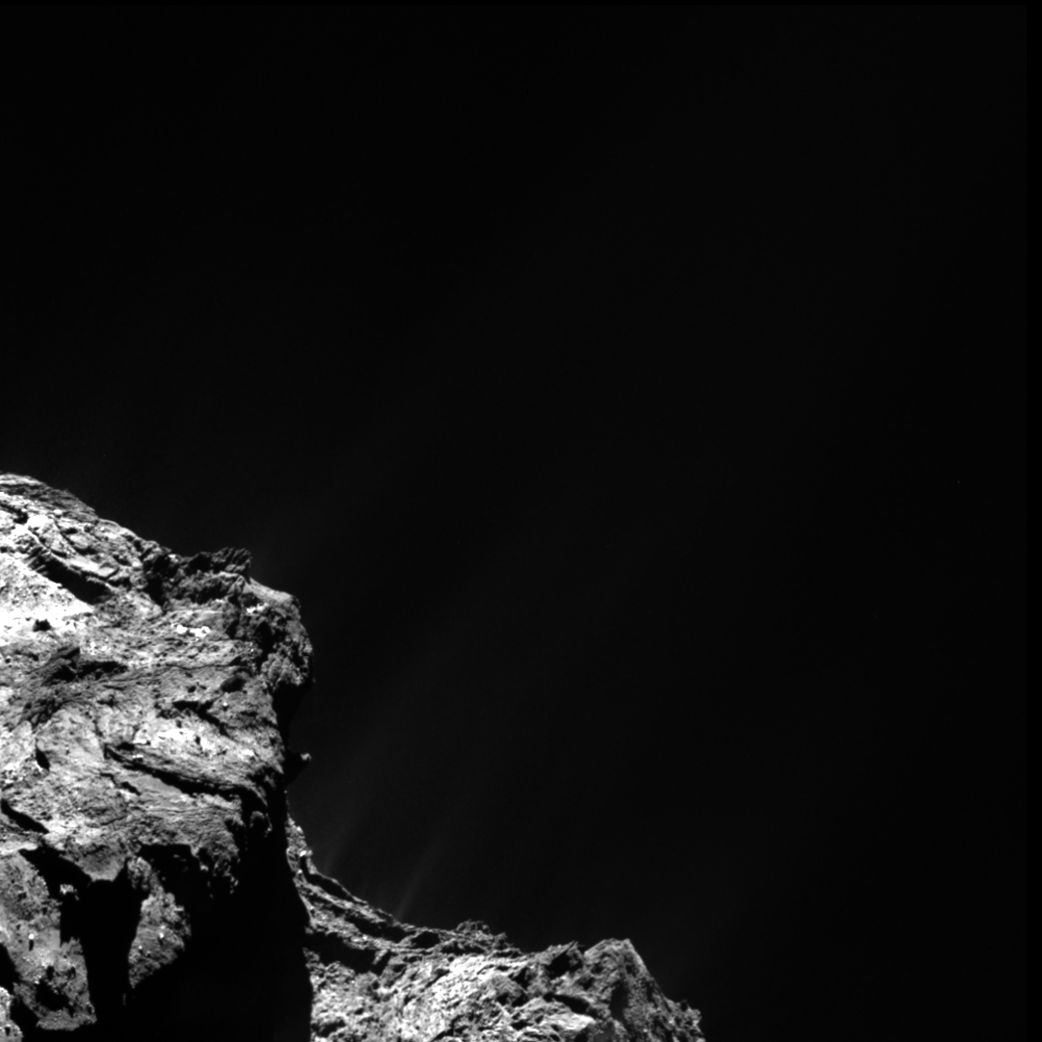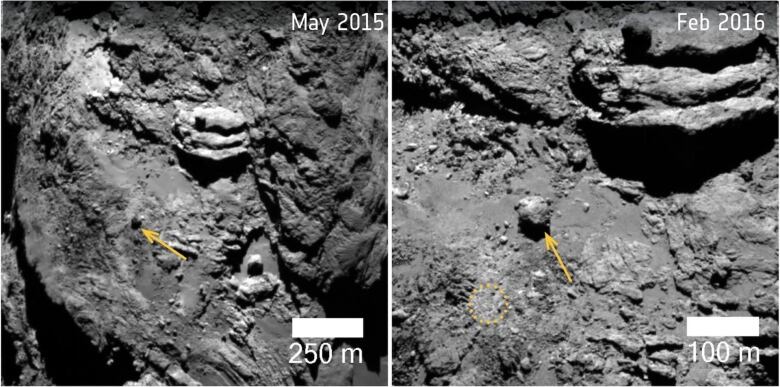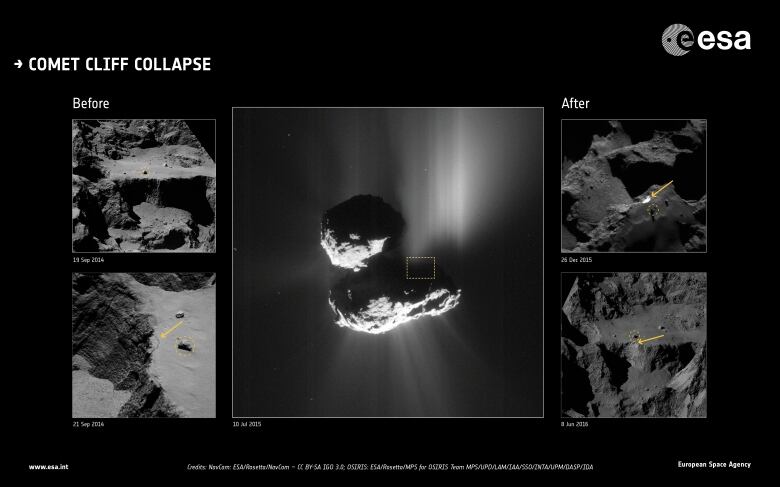Europe’s space agency needs your eyeballs to study a comet | CBC Radio
European space scientists are soliciting help from the public to spot signs of activity on a comet.
For two years, between 2014 and 2016, the European Space Agency’s Rosetta spacecraft caught up to comet 67P/Churyumav-Gerasimenko, also known as simply 67P. This ambitious mission was the first to rendezvous with a comet, and stay with it as it swung past the sun. It was the first opportunity to observe in closeup detail how a comet produces its signature tail.
Comets are extremely old solar system objects made of a combination of rock and ice, loosely cobbled together into oddly-shaped objects only a few kilometres across. 67P is roughly three by five kilometres and shaped like a rubber duck.
Most comets are found in the cold depths of space out beyond Neptune where they remain quiet and frozen. But every once in a while, one of them wanders inwards toward the sun. As it approaches the inner solar system, the heat of the sun vaporizes its ice, and water vapour and dust rise off the surface to form the long beautiful tails we occasionally see draped across our skies on Earth.

67P has an orbit that only takes it out as far as Jupiter. As a result it makes repeated visits to the inner solar system every 6.5 years, making it a good target for study. Other familiar visiting comets have much longer orbits. The most famous — Halley’s comet — takes about 75 years in its journey around the sun, taking it out as far as Pluto.

During its mission, Rosetta took nearly 100,000 images of the comet’s entire surface. Now the space agency is asking for the public’s help to go through them to help spot any changes that happened as it followed the comet around the sun.
It turns out the human eye is the best tool to pick out subtle changes in images taken from the spacecraft. Images of the comet are variable due to the ever-changing vantage point and illumination of the comet. This makes it hard to automate the process of observing the comet as computers can’t tell the difference between changing illumination and perspective and actual changes to the comet. The human eye and brain are still unmatched in this kind of pattern recognition task.
Using a program called Zooniverse, people can examine before-and-after images of a region on the comet and note any differences they see.

Some of the changes are small. Perhaps a new crack appears, or a rock changes position because material eroded under it. Volunteers will have to look closely and carefully, like those challenges in magazines that task the reader with identifying the differences between two nearly-identical photos or drawings.
The point of the project is to determine exactly how a comet loses ice and dust, where the material comes from — whether straight off the surface or out through vents — and how much the comet is affected by the sun’s heat.

Scientists hope this will provide information about the life cycle of a comet, especially one like 67P that makes regular return visits. Those visits will eventually erode all the ice from the comet’s mass, reducing it to a flying pile of rubble that no longer develops a tail.
Comets have been the subject of lore for centuries, generating both fear and fascination. Now you have an opportunity to contribute to real science and get up close and personal with one of these dazzling celestial visitors from deep space.
For all the latest Technology News Click Here

